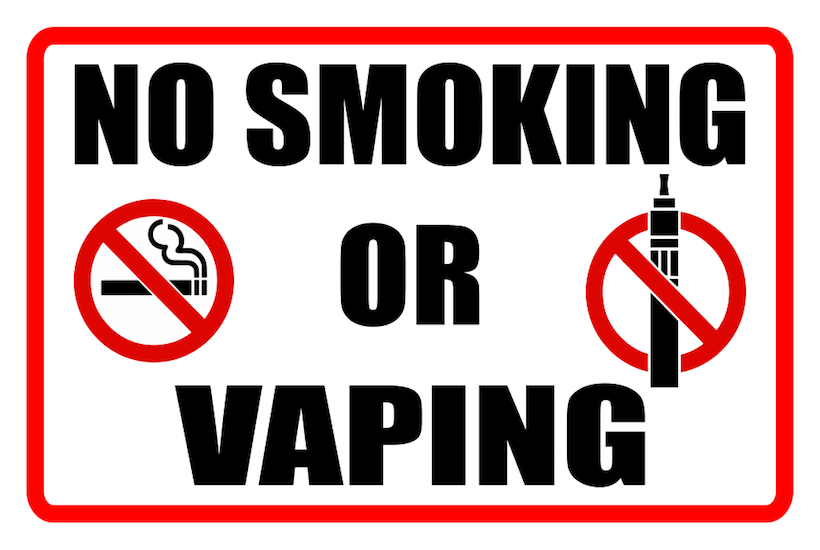If you were told that the Cancer Council along with the Australian Medical Association were campaigning for more cancer, you would want to know what the hell is going on. And yet judging by their stance on e-cigarettes, it would seem that is precisely what they are doing.
The Parliamentary Inquiry into the Use and Marketing of Electronic Cigarettes and Personal Vaporisers in Australia currently being held by the Standing Committee on Health Aged Care and Sport heard testimony last week from Dr John Bartone from the AMA. His stance and that of the AMA is that because we don’t know for sure that inhaling nicotine with vaporisers is 100 per cent safe in the long run, we should keep prohibition in place until exhaustive long-term studies have been done.
This might sound reasonable on the surface. After all, how could the AMA endorse the use of a product that could be harmful to our health? But when we look at why people want to use e-cigarettes it becomes clear that they use them to quit smoking; an activity known for its damaging effect on human health.
More and more evidence is coming to light that gives vaping the thumbs up as an effective smoking cessation tool. A recent study in the BMJ published this year analysed whether the increase in the use of e-cigarettes in the United States was associated with a change in the overall smoking cessation rate in the general population. The results showed that e-cigarette users were more likely to try and quit smoking, and were more likely to succeed than smokers who try and quit without using e-cigarettes.
Overall the study concluded that the substantial increase in e-cigarette use in the US was associated with a statistically significant increase in the smoking cessation rate in the general population. Other studies have shown a benefit to smokers of switching to e-cigarettes finding that vaporisers can improve the lung function of smokers, that second-hand vapour is not a health hazard, that nicotine e-cigarette liquids are less addictive than regular cigarettes, that vaping is better for your health than smoking, and that vaping is not a ‘gateway’ activity for non-smokers to take up smoking.
But according to Dr Bartone and the AMA, it is better to make it difficult for people who want to try e-cigarettes to quit smoking, than it is to endorse vaping as a cessation device just in case there are unforeseen future negative health effects. Following this logic, it is better that more people die from smoking who would have otherwise quit by vaping nicotine than it is to adopt a policy of cautious harm minimisation and endorse a product that may not be 100 per cent safe.
This is despite the fact that in the UK, The Royal College of Physicians’ report ‘Nicotine without smoke: Tobacco harm reduction’ came to the following conclusion: “For all the potential risks involved, harm reduction has huge potential to prevent death and disability from tobacco use, and to hasten our progress to a tobacco-free society.”
Martin Dockrell from Public Health England says that in the UK they ‘encourage anyone who is trying to quit to try e-cigarettes.’ According to Action on Smoking and Health, over half (52 per cent) of e-cigarette users in the UK are now ex-smokers who say their main reason for vaping is to quit smoking; while those who vape and still smoke use e-cigarettes to reduce the number of cigarettes they use.
That isn’t to say that vaping with e-cigarettes is a completely harmless activity. There may very well be long-term health implications of vaping nicotine, but if it is a temporary measure that helps people quit the much more unhealthy activity of smoking, then overall harm has been reduced.
Which leads to the obvious question. Why does the AMA hold a position that will likely result in fewer people quitting? And it’s not just the AMA. The Cancer Council’s official policy on e-cigarettes is to recommend that they remain illegal despite evidence that suggests that they increase the numbers of people quitting smoking and lead to fewer cigarettes being smoked by smokers who use e-cigarettes as well. According to Professor Ann McNeill from Kings College London, ‘the situation in Australia protects the cigarette business, encourages smoking and increases the risk of disease’ — a situation promoted by the AMA and the Cancer Council.
The current ban leaves us in the ludicrous position of having products that are known carcinogens freely available on the market (as they should be), while a product that has been demonstrated to reduce smoking rates, is banned due to potential, as yet unknown, health risks. Not only are smokers prevented from legally accessing e-cigarettes, they face exorbitant fines for doing so. In testimony to the Standing Committee’s inquiry last week, Tim Andrews of the Australian Taxpayers’ Alliance outlined fines of up to $45,000 applicable to people who are ‘caught’ using nicotine in their e-cigarettes without a doctor’s prescription. How’s that for incentive to quit?
Of course all this talk of 100 per cent safety and potential for harm shouldn’t really matter. The AMA and the Cancer Council are free to give health advice to Australians, that is a legitimate activity within the scope of their mission. But we also ought to be free to ignore it. Even if there are some health risks to vaping, we should be free to make that choice ourselves, without health bodies lobbying to ban things they don’t think we should have. Prohibition has a bad track record, and despite the illegality and fines, some Australians will no doubt continue to purchase e-cigarettes and continue to use them. Why turn people into criminals for seeking a viable smoking alternative?
Sadly the stance of the AMA and the Cancer Council on e-cigarettes is not in our best interests. They are rejecting the principle of harm reduction as it applies to smoking cessation and e-cigarettes, despite the evidence. If they have their way it may result in unnecessary deaths. It’s not known when the Standing Committee will hand down their findings, but in the meantime let’s hope they see sense.
Nicola Wright is senior writer at LibertyWorks.
Got something to add? Join the discussion and comment below.
Got something to add? Join the discussion and comment below.
Get 10 issues for just $10
Subscribe to The Spectator Australia today for the next 10 magazine issues, plus full online access, for just $10.


























Comments
Don't miss out
Join the conversation with other Spectator Australia readers. Subscribe to leave a comment.
SUBSCRIBEAlready a subscriber? Log in